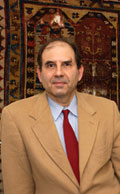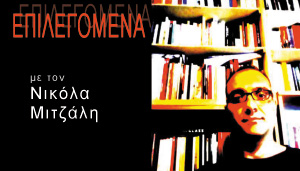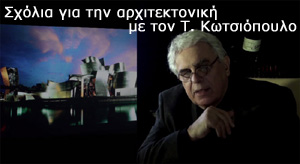About us
Συντελεστές

Νίκου Σαλίγκαρου (Συντάκτης)
Nikos Angelos Salingaros is a practicing Urbanist and Architectural Theorist, with a foundation as a Scientist and Mathematician. He was born in Perth, Australia of Greek parents in 1952. He obtained a Ph.D. in Theoretical Physics from the State University of New York at Stony Brook, and is now Professor of Mathematics at the University of Texas at San Antonio. Dr. Salingaros is affiliated with the architecture faculties of the Universities of Delft, Rome III, and Queretaro, Mexico, and supervises thesis students from all around the world on architectural and urban topics. He has enjoyed an architectural collaboration with Christopher Alexander over a twenty-five year period, helping to edit Alexander's monumental "The Nature of Order".
Work
Dr. Salingaros applies his unique theoretical insights (which come from the relationship between mathematics, science, and architecture) to architectural and urban projects. He collaborates in his professional activities with José Cornelio-da-Silva (Lisbon), Kenneth Masden II (San Antonio), Michael Mehaffy (Portland), Hadi Simaan (Berkshire & Qatar), and Lucien Steil (London). He is advising developers of American New Urbanist projects as well as being a consultant for government planners in Brazil, Mexico, and Spain. Dr. Salingaros helped co-author the "New Charter of Athens, 2003", establishing the importance of networks, and giving a solid scientific backing to traditional commonsense solutions.
His work is seen by many as forging a crucial scientific underpinning for innovative ideas of a new humanistic architecture married to the timeless content of traditional architectures. He is respected for providing a powerful boost for traditional architecture and urbanism as exemplified by the work of Leon Krier and others, while connecting it to the very different, complementary contributions of Christopher Alexander. Lately, Dr. Salingaros helped to bring the notion of biophilic architecture into the public understanding. This work finally removes architecture out of the realm of personal opinion and whim, linking the built environment to our biological makeup.
Dr. Salingaros provides key support for the New Urbanism movement, combining its typologies with new exigencies of the developing "Network City". He gained worldwide notice in 2001 when he predicted the end of the skyscraper era, in an essay written together with James Howard Kunstler. As a real scientist, he has been instrumental in exposing the pseudoscientific jargon used by currently popular architects to promote their trendy but ultimately inhuman projects (ranging from minimalism, to modernism, to post-modernism, to deconstructivism and blobitecture). A recent study of Social Housing in Latin America (in collaboration with David Brain, Andrés M. Duany, Michael W. Mehaffy & Ernesto Philibert-Petit) was commissioned by the Brazilian Government in 2006, and later presented in a 2007 lecture tour in Argentina. It may yet define a new solution for the world's most pressing building and urban problem, in a way that utilizes sustainability and self-organization.
His publications have been collected into four books: the very popular and controversial "Anti-architecture and Deconstruction" (Umbau-Verlag, Solingen, 2004); the ground breaking "Principles of Urban Structure" (Techne Press, Amsterdam, 2005); the comprehensive new textbook "A Theory of Architecture" (Umbau-Verlag, Solingen, 2006), and the still incomplete "The Future of Cities" (forthcoming from Umbau-Verlag). Many of his writings have been translated into several languages and are widely used by students, professionals and governments to redesign cities and to define once again an architecture adapted to human beings.
Further information
Nikos A. Salingaros
Department of Mathematics
University of Texas at San Antonio
One UTSA Circle
San Antonio, Texas 78249-0677
Tel. 001 210 458 5546
Fax. 001 210 458 4439
Email salingar@sphere.math.utsa.edu
www.math.utsa.edu/~salingar
| E-mail: | salingar@sphere.math.utsa.edu |
| Url: | http://www.math.utsa.edu/~salingar/contr.arch.html |






